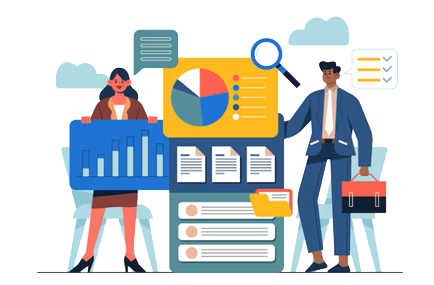How to Choose the Right Productivity Monitoring Software for Your Business Needs
In today’s fast-paced business world, staying productive is a constant challenge. Productivity monitoring software is essential for tracking and improving efficiency, but with so many options available, choosing the right one can feel overwhelming. In this article, we’ll walk you through the key steps to help you select the best tool for your business, whether you’re a small startup or a growing enterprise.
Step 1: Understand Your Business Needs
Before diving into the myriad of productivity monitoring software options, it’s essential to evaluate your business needs:
- What are your primary goals? Are you focusing on time management, task completion, or overall team productivity?
- What challenges is your team facing? Are there issues with task delays, unproductive behaviors, or communication gaps?
Take time to understand your business’s pain points and priorities. Knowing whether you need something simple for tracking tasks or a more robust system for detailed reporting will help you narrow down your options.
Step 2: Consider Team Size and Structure
Not all productivity monitoring software is created equal, especially when it comes to team size.
- For small teams: A lightweight, easy-to-use tool that helps monitor time, manage tasks, and track progress may be sufficient. Look for tools that emphasize ease of use without overwhelming features.
- For large teams: You’ll need something scalable with more complex reporting and analytics. Consider tools that allow for customizable dashboards, team-wide project tracking, and integration with other software like project management tools.
The productivity monitoring software you choose must match the scale of your team and workflow processes.
Step 3: Aligning Software Features with Your Goals
Every business has different needs, and so should the software. When selecting a tool, think about the key features that align with your goals.
- Task tracking vs. time management: If your goal is to improve task completion, look for software that allows you to set clear goals, deadlines, and assign tasks. If time management is your priority, focus on tools with detailed time-tracking features.
- Reporting & analytics: Detailed reports help you understand productivity trends and identify areas for improvement. Choose software that offers data insights, customizable reports, and visual analytics.
By matching features with your business needs, you’ll find software that enhances productivity without overwhelming your team.
Step 4: Industry-Specific Requirements
Different industries may require specific features.
- Tech & IT companies: These businesses often require project management integration and time-tracking for billable hours.
- Service-based industries: Focus on task management, performance reviews, and client communication.
- Remote teams: Look for software with live-screen monitoring, time-tracking, and communication tools that help teams stay connected despite physical distance.
By understanding your industry’s unique demands, you can select productivity monitoring software tailored to your business environment.
Step 5: Integration with Existing Tools and Platforms
One of the most important factors in choosing the right software is its ability to integrate with tools you already use. If your team relies on software like:
- Project management tools (e.g., Karya Keeper, Trello)
- Communication platforms (e.g., Slack, Microsoft Teams)
You’ll want productivity monitoring software that seamlessly integrates with these platforms. This will help avoid silos, streamline workflows, and ensure that data across systems is synchronized for maximum efficiency.
Step 6: Data Privacy and Security
As with any tool that tracks employee activity, data privacy and security must be a priority. Make sure the software complies with your country’s privacy regulations (e.g., GDPR in the EU, CCPA in California).
- Look for encryption options to protect sensitive data.
- Ensure employees are aware of data usage policies to maintain transparency.
Security is vital, not only for legal reasons but also for maintaining trust with your employees.
Step 7: Budget Considerations
Choosing the right software doesn’t always mean choosing the most expensive one. Here’s how to balance your budget:
- Free versions: Many tools offer free versions with basic features. These may be ideal for small teams with limited needs.
- Paid solutions: As your team grows, you might need more advanced features. Evaluate the price versus the features offered to ensure you’re getting value for your investment.
Remember, choosing productivity monitoring software is an investment, not a cost. It should provide a good return in terms of improved productivity and efficiency.
Step 8: Test Before You Commit
Before making a final decision, always test the software. Most platforms offer free trials or demos.
- Involve your team in the trial process. Get their feedback on usability and functionality.
- Assess whether the tool meets your needs in real-world scenarios.
A thorough test will help you avoid potential issues down the road.
Conclusion
Choosing the right productivity monitoring software for your business can greatly enhance your team’s efficiency, reduce delays, and clarify workload distribution. By following the steps outlined above, you’ll be able to select a tool that not only fits your team’s size and industry but also supports your unique goals.
Take your time, evaluate carefully, and test your options—your team will thank you for it.













